Early Communicative Development in Williams Syndrome: A Longitudinal Case Study
Abstract
1. Introduction
1.1. Atypical Neuropsychological Profile in WS: Dissociation between Cognition and Language
1.2. Late Onset of Language in Children with Williams Syndrome
1.3. Early Communicative Precursors of Language Development
1.4. Language Precursors in Williams Syndrome
1.5. Objectives and Hypotheses
- (i)
- To assess general developmental milestones through the application of the Battelle Developmental Inventory (BDI) at the beginning and at the end of the observation period to determine points of developmental strength and weakness in the areas and subareas assessed by the BDI.
- (ii)
- To observe and analyze the evolution of joint attention, attention to objects, attention to the face, and loss of attention.
- (iii)
- To observe and analyze the evolution of referential behaviors: visual convergence, deictic gesture, verbal comprehension and expression, natural gestures, displaying objects.
- (iv)
- To observe and analyze the evolution of instrumental and cognitive behaviors, such as object permanence, object manipulation strategies, construction tasks and play patterns.
2. Materials and Methods
2.1. Participant
2.2. Instrument
- -
- Battelle Developmental Inventory (BDI) [58]. This scale allows the assessment of fundamental developmental skills in children from 0 to 95 months. In the present study, the Spanish adaptation of the second edition was applied. The authors state that it is suitable for detecting “at-risk children” at the earliest ages, as well as for identifying developmental strengths and weaknesses, planning treatment, and assessing short- and long-term improvements. The scale consists of 341 items grouped into five developmental areas (a screening mode reduced to 96 items can also be applied). The results are expressed in percentiles, typical scores and equivalent ages by assessment domains and subdomains:
- -
- Adaptative: 59 items evaluating Attention, feeding, dressing, toileting, and personal responsibility.
- -
- Personal/Social: 85 items evaluating Adult interaction, Expression of feelings/affect, Self-Concept, Peer interaction, Collaboration, and Social Role.
- -
- Communicative: 59 items evaluating Receptive Communication and Expressive Communication.
- -
- Motor: 82 items evaluating Muscle control, Body coordination, Walking, Fine motor, and Perceptual motor.
- -
- Cognitive: 56 items evaluating Perception, Memory, Reasoning, Academic skills, and Development of concepts.
2.3. Materials for the Naturalistic Observation Sessions
- -
- Construction and manipulation toys, such as interlocking pieces to create towers; stackables, such as hoops or cubes; puzzles, dolls, balls, or figures of different characteristics.
- -
- Toys with acoustic sounds, such as rattles, maracas, bells, or tambourines.
- -
- Electronic toys with buttons, digital sound, or movement, such as a screen with farm animals, a microphone, or dolls with voice reproduction or melodies.
- -
- Children’s books made of cloth and cardboard, such as the Pinocchio story or picture books with illustrations of different elements (animals, objects, people, etc.).
- -
- Other objects that responded to the needs of the tasks designed, such as containers (cups, jars), screens made of different materials, ropes, rags, etc.
2.4. Procedure
- -
- First session (S1): a first contact was made with the baby, his family, and his environment. Daniel’s interaction with objects and adults, his verbal expression, instrumental and object permanence skills, object manipulation and exploration were observed.
- -
- Second session (S2): the materials, activities, and questions necessary for the first application of the corresponding items of the BDI were prepared. In addition, play situations were recorded to register the child’s joint attention. During the activities, simple requests were also formulated to observe the child’s responses.
- -
- Third session (S3): to observe joint attention, an activity was prepared in which two toys were placed in front of the infant, and the adult played with one of them. It was observed whether the child directed and shared attention towards the toy chosen by the adult, ignoring the other one. Object permanence was also evaluated, as it was not fully acquired in the previous session, as well as instrumental behaviors and strategies to reach objects. Comprehension of simple commands, manipulation and attention to objects and referential behaviors were again observed.
- -
- Fourth session (S4): to assess joint attention, an activity was prepared in which it was observed whether the child used communicative references offered by the adult (deictic pointing, gaze direction and verbal instruction) to find an object hidden under some containers. An activity was also designed to measure the child’s attention and anticipation towards an object that, in its trajectory, disappeared behind a screen. In addition, comprehension of simple requests, joint attention in story reading and play situations, verbal expression, and instrumental and manipulative tasks were observed.
- -
- Fifth session (S5): activities were prepared to evaluate progress on: finding a hidden object, anticipating the trajectory of a toy, construction and manipulation tasks, comprehension of simple commands and verbal labels, verbal expression, and play.
- -
- Sixth session (S6): activities, materials and questions were prepared for the second application of the corresponding BDI items. The activities of finding the hidden toy and the trajectory of a toy were carried out, as well as the observation of comprehension of simple instructions, production of verbal labels and joint attention in different play situations.
2.5. Data Analysis
- -
- Temporality of the recording (punctual/follow-up)
- -
- Subjects or items observed (idiographic/nomothetic)
- -
- Levels of response (unidimensional/multidimensional).
- (i)
- Attention behaviors:
- -
- Triadic (joint) attention
- -
- Attention to objects
- -
- Attention to face
- -
- Loss of attention
- (ii)
- Referential behaviors:
- -
- Picking up, showing and offering objects
- -
- Visual convergence
- -
- Deictic pointing: comprehension and production
- -
- Natural gestures: imitated and spontaneous
- -
- Responses to requests: verbal and nonverbal
- -
- Understanding of name and other referents
- -
- Verbal expression: vocalizations, babbling and verbal labels
- (iii)
- Object permanence and instrumental behaviors
- -
- Searching for and retrieval of a hidden object
- -
- Strategies for reaching objects
- -
- Construction tasks
- -
- Play: dyadic and object play
- -
- Duration in time expressed in seconds and proportion of time in percentages (Attention behaviors; Play).
- -
- Frequency of occurrence as a function of time (per minute) (Verbal expression; Natural gestures).
- -
- Frequency of occurrence and proportion as a function of opportunities (other behaviors).
3. Results
3.1. Assessment with the Battelle Development Inventory (BDI)
3.2. Observation of Attention Behaviors
3.3. Observation of Referential Behaviors
3.4. Observation of Behaviors Related to Object Permanence and Instrumentation
4. Discussion
5. Conclusions
Author Contributions
Funding
Institutional Review Board Statement
Informed Consent Statement
Data Availability Statement
Acknowledgments
Conflicts of Interest
References
- Strømme, P.; Bjømstad, P.G.; Ramstad, K. Prevalence Estimation of Williams Syndrome. J. Child Neurol. 2002, 17, 269–271. [Google Scholar] [CrossRef] [PubMed]
- Garayzábal, E.; Fernández, M.; Diez-Itza, E. Guía de Intervención Logopédica en el Síndrome de Williams; Síntesis: Madrid, Spain, 2010. [Google Scholar]
- Beuren, A.J.; Apitz, J.; Harmjanz, D. Supravalvular Aortic Stenosis in Association with Mental Retardation and a Certain Facial Appearance. Circulation 1962, 26, 1235–1240. [Google Scholar] [CrossRef] [PubMed]
- Williams, J.C.P.; Barratt-Boyes, B.G.; Lowe, J.B. Supravalvular Aortic Stenosis. Circulation 1961, 24, 1311–1318. [Google Scholar] [CrossRef] [PubMed]
- Kataria, S.; Goldstein, D.J.; Kushnick, T. Developmental delays in williams (“Elfin Facies”) syndrome. Appl. Res. Ment. Retard. 1984, 5, 419–423. [Google Scholar] [CrossRef] [PubMed]
- Meyerson, M.D.; Frank, R.A. Language, Speech and Hearing in Williams Syndrome: Intervention Approaches and Research Needs. Dev. Med. Child Neurol. 2008, 29, 258–262. [Google Scholar] [CrossRef]
- Bellugi, U.; Marks, S.; Bihrle, A.; Sabo, H. Dissociation between language and cognitive function in Williams syndrome. In Language Development in Exceptional Circumstances; Bishop, D., Mogford, K., Eds.; Churchill Livingstone: London, UK, 1998; pp. 177–189. [Google Scholar]
- Bellugi, U.; Bihrle, A.; Jernigan, T.; Trauner, D.; Doherty, S. Neuropsychological, neurological, and neuroanatomical profile of Williams syndrome. Am. J. Med. Genet. 2005, 37, 115–125. [Google Scholar] [CrossRef] [PubMed]
- Diez-Itza, E.; Antón, A.; Fernández-Toral, J.; García-Peérez, M.L. Language development in Spanish children with Williams syndrome. In Perspectives on Language Acquisition; Selected papers from the VIIth international congress for the study of child, language; Aksu, A., Erguvanli, E., Kuntay, A.S.Y.A., Eds.; Bogaziçy University Press: Istanbul, Turkey, 1998; pp. 309–324. [Google Scholar]
- Karmiloff-Smith, A.; Grant, J.; Berthoud, I.; Davies, M.; Howlin, P.; Udwin, O. Language and Williams Syndrome: How Intact Is “Intact”? Child Dev. 1997, 68, 246–262. [Google Scholar] [CrossRef] [PubMed]
- Volterra, V.; Capirci, O.; Pezzini, G.; Sabbadini, L.; Vicari, S. Linguistic Abilities in Italian Children with Williams Syndrome. Cortex 1996, 32, 663–677. [Google Scholar] [CrossRef]
- Bellugi, U.; St. George, M.S. (Eds.) Journey from Cognition to Brain to Gene: Perspectives from Williams Syndrome; MIT Press: Cambridge, MA, USA, 2001. [Google Scholar]
- Jones, W.; Bellugi, U.; Lai, Z.; Chiles, M.; Reilly, J.; Lincoln, A.; Adolphs, R. Hypersociability in Williams Syndrome. J. Cogn. Neurosci. 2000, 12, 30–46. [Google Scholar] [CrossRef]
- Klein-Tasman, B.P.; Mervis, C.B. Distinctive Personality Characteristics of 8-, 9-, and 10-Year-Olds with Williams Syndrome. Dev. Neuropsychol. 2003, 23, 269–290. [Google Scholar] [CrossRef]
- Reilly, J.; Klima, E.S.; Bellugi, U. Once more with feeling: Affect and language in atypical populations. Dev. Psychopathol. 1990, 2, 367–391. [Google Scholar] [CrossRef]
- Brock, J.; Einav, S.; Riby, D.M. The other end of the spectrum? Social cognition in Williams syndrome. In Social Cognition: Development, Neuroscience and Autism; Striano, T., Reid, V., Eds.; Blackwell: Hoboken, NJ, USA, 2009; pp. 281–300. [Google Scholar]
- Lacroix, A.; Famelart, N.; Guidetti, M. Language and emotional abilities in children with Williams syndrome and children with autism spectrum disorder: Similarities and differences. Pediatr. Healt Med. Ther. 2016, 7, 89–97. [Google Scholar] [CrossRef]
- Diez-Itza, E.; Martínez, V.; Miranda, M.; Antón, A.; Ojea, A.I.; Fernández-Urquiza, M.; Perez, V.; Fernández-Toral, J.; García, I.; Medina, B.; et al. The Syndroling Project: A comparative linguistic analysis of typical development profiles and neurodevelopmental genetic syndromes (Down, Williams and fragile X syndromes). In Proceedings of the IASCL-XII international Congress for the Study of Child Language, Amsterdam, The Netherlands, 14–19 July 2014. [Google Scholar]
- Pérez, V.; Martínez, V.; Diez-Itza, E. Late phonological development in Williams syndrome. Front. Psychol. 2022, 13, 992512. [Google Scholar] [CrossRef]
- Diez-Itza, E.; Martínez, V.; Fernández-Urquiza, M.; Antón, A. Morphological profile of Williams syndrome: Typical or atypical? In Language Development and Disorders in Spanish-Speaking Children; Auza, A., Schwartz, R.G., Eds.; Springer: Berlin/Heidelberg, Germany, 2017; Volume 14, pp. 311–327. [Google Scholar] [CrossRef]
- Diez-Itza, E.; Miranda, M.; Pérez, V.; Martínez, V. Profiles of grammatical morphology in Spanish-speaking adolescents with Williams syndrome and Down syndrome. In Atypical Language Development in Romance Languages; Aguilar-Mediavilla, E., Buil-Legaz, L., López-Penadés, R., Sanchez-Azanza, V.A., Adrover-Roig, D., Eds.; John Benjamins: Amsterdam, The Netherlands, 2019; pp. 219–234. [Google Scholar] [CrossRef]
- Diez-Itza, E.; López, M.A.; Martínez, V.; Miranda, M. Perfiles comparados de comprensión léxica en los síndromes de Williams, Down y X Frágil. In Proceedings of the XXX Congreso Internacional AELFA-IF/CLPV, Bilbao, Spain, 30 June–2 July 2016. [Google Scholar]
- Diez-Itza, E.; Martínez, V.; Antón, A. Narrative competence in Spanish-speaking adults with Williams syndrome. Psicothema 2016, 28, 291–297. [Google Scholar] [CrossRef] [PubMed]
- Diez-Itza, E.; Martínez, V.; Pérez, V.; Fernández-Urquiza, M. Explicit Oral Narrative Intervention for Students with Williams Syndrome. Front. Psychol. 2018, 8, 2337. [Google Scholar] [CrossRef] [PubMed]
- Diez-Itza, E.; Viejo, A.; Fernández-Urquiza, M. Pragmatic Profiles of Adults with Fragile X Syndrome and Williams Syndrome. Brain Sci. 2022, 12, 385. [Google Scholar] [CrossRef]
- Shiro, M.; Diez-Itza, E.; Fernández-Urquiza, M. Evaluative language and component structure of oral narratives in Williams Syndrome. In Atypical Language Development in Romance Languages; Aguilar-Mediavilla, E., Buil-Legaz, L., López-Penadés, R., Sanchez-Azanza, V.A., Adrover-Roig, D., Eds.; John Benjamins: Amsterdam, The Netherlands, 2019; pp. 235–252. [Google Scholar]
- Garayzábal, E.; Fernández, M.; Sampaio, A.; Gonçalves, O. Valoración interlinguística de la producción verbal a partir de una tarea narrativa en el síndrome de Williams. Psicothema 2007, 19, 428–434. [Google Scholar]
- Garayzábal, E.; Cuetos, F. Aprendizaje de la lectura en los niños con síndrome de Williams. Psicothema 2008, 20, 672–677. [Google Scholar]
- Benítez-Burraco, A.; Garayzábal, E.; Cuetos, F. Syntax in Spanish-speaking children with Williams syndrome. J. Commun. Disord. 2016, 60, 51–61. [Google Scholar] [CrossRef]
- Karmiloff-Smith, A. Atypical epigenesis. Dev. Sci. 2007, 10, 84–88. [Google Scholar] [CrossRef]
- Brock, J. Language abilities in Williams syndrome: A critical review. Dev. Psychopathol. 2007, 19, 97–127. [Google Scholar] [CrossRef]
- Aguado, G. El Desarrollo del Lenguaje de 0 a 3 Años. Bases para un Diseño Curricular en la Educación Infantil; CEPE: Madrid, Spain, 2000. [Google Scholar]
- Masataka, N. Why early linguistic milestones are delayed in children with Williams syndrome: Late onset of hand banging as a possible rate–limiting constraint on the emergence of canonical babbling. Dev. Sci. 2001, 4, 158–164. [Google Scholar] [CrossRef]
- Charman, T.; Baron-Cohen, S.; Swettenham, J.; Baird, G.; Cox, A.; Drew, A. Testing joint attention, imitation, and play as infancy precursors to language and theory of mind. Cogn. Dev. 2000, 15, 481–498. [Google Scholar] [CrossRef]
- Charman, T.; Baron-Cohen, S.; Swettenham, J.; Baird, G.; Drew, A.; Cox, A. Predicting language outcome in infants with autism and pervasive developmental disorder. Int. J. Lang. Commun. Disord. 2003, 38, 265–285. [Google Scholar] [CrossRef] [PubMed]
- Brooks, R.; Meltzoff, A.N. The importance of eyes: How infants interpret adult looking behavior. Dev. Psychol. 2002, 38, 958–966. [Google Scholar] [CrossRef] [PubMed]
- Thompson, R.A. The development of the person: Social understanding, relationships, conscience, and self. In Handbook of Child Psychology; Eisenberg, N., Damon, W., Lermer, R.M., Eds.; Wiley: Hoboken, NJ, USA, 2006; Volume 3, pp. 24–98. [Google Scholar]
- Tomasello, M. (Ed.) Joint Attention as Social Cognition; Erlbaum: Mahwah, NJ, USA, 1995. [Google Scholar]
- John, A.E.; Mervis, C.B. Comprehension of the Communicative Intent Behind Pointing and Gazing Gestures by Young Children with Williams Syndrome or Down Syndrome. J. Speech Lang. Hear. Res. 2010, 53, 950–960. [Google Scholar] [CrossRef] [PubMed][Green Version]
- Sodian, B.; Thoermer, C. Infants’ Understanding of Looking, Pointing, and Reaching as Cues to Goal-Directed Action. J. Cogn. Dev. 2004, 5, 289–316. [Google Scholar] [CrossRef]
- Mundy, P.; Gomes, A. Individual differences in joint attention skill development in the second year. Infant Behav. Dev. 1998, 21, 469–482. [Google Scholar] [CrossRef]
- Morales, M.; Mundy, P.; Rojas, J. Following the direction of gaze and language development in 6-month-olds. Infant Behav. Dev. 1998, 21, 373–377. [Google Scholar] [CrossRef]
- Laing, E.; Butterworth, G.; Ansari, D.; Gsödl, M.; Longhi, E.; Panagiotaki, G.; Paterson, S.; Karmiloff-Smith, A. Atypical development of language and social communication in toddlers with Williams syndrome. Dev. Sci. 2002, 5, 233–246. [Google Scholar] [CrossRef]
- Camaioni, L.; Castelli, M.C.; Longobardi, E.; Volterra, V. A parent report instrument for early language assessment. First Lang. 1991, 11, 345–358. [Google Scholar] [CrossRef]
- Harris, M.; Barlow-Brown, F.; Chasin, J. The Emergence of Referential Understanding: Pointing and the Comprehension of Object Names. First Lang. 1995, 15, 19–34. [Google Scholar] [CrossRef]
- Ungerer, J.A.; Sigman, M. The Relation of Play and Sensorimotor Behavior to Language in the Second Year. Child Dev. 1984, 55, 1448–1455. [Google Scholar] [CrossRef] [PubMed]
- Carpenter, M.; Nagell, K.; Tomasello, M. Social cognition, joint attention and communicative competence from 9 to 15 months of age. Monogr. Soc. Res. Child Dev. 1998, 63, 1–143. [Google Scholar] [CrossRef]
- John, A.E.; Dobson, L.A.; Thomas, L.E.; Mervis, C.B. Pragmatic Abilities of Children with Williams Syndrome: A Longitudinal Examination. Front. Psychol. 2012, 3, 199. [Google Scholar] [CrossRef] [PubMed]
- Klein-Tasman, B.P.; Mervis, C.B.; Lord, C.; Phillips, K.D. Socio-Communicative Deficits in Young Children with Williams Syndrome: Performance on the Autism Diagnostic Observation Schedule. Child Neuropsychol. 2007, 13, 444–467. [Google Scholar] [CrossRef] [PubMed]
- Lincoln, A.J.; Searcy, Y.M.; Jones, W.; Lord, C. Social Interaction Behaviors Discriminate Young Children with Autism and Williams Syndrome. J. Am. Acad. Child Adolesc. Psychiatry 2007, 46, 323–331. [Google Scholar] [CrossRef] [PubMed]
- Rowe, M.L.; Peregrine, E.; Mervis, C.B. Communicative development in toddlers with Williams syndrome. In Proceedings of the Society for Research in Child Development, Atlanta, GA, USA, 7–10 April 2005. [Google Scholar]
- Hepburn, S.L.; Fidler, D.; Hahn, L.; Philofsky, A. Social-perceptual and social-cognitive skills in young children with Williams syndrome: Evidence for discontinuity. In International Review of Research in Developmental Disabilities; Fidler, D., Ed.; Academic Press: Cambridge, MA, USA, 2011; Volume 40, pp. 181–210. [Google Scholar]
- Mervis, B.; Bertrand, J. Developmental relations between cognition and language: Evidence from Williams syndrome. In Communication and Language Acquisition: Discoveries from Atypical Development; Adamson, L.B., Romski, M.A., Eds.; Brookes: Oxford, UK, 1997; pp. 75–106. [Google Scholar]
- Mervis, C.B.; Becerra, A.M. Language and communicative development in Williams syndrome. Ment. Retard. Dev. Disabil. Res. Rev. 2007, 13, 3–15. [Google Scholar] [CrossRef]
- Mervis, B.; Robinson, B.F.; Rowe, M.L.; Becerra, A.M.; Klein-Tasman, B.P. Language abilities of individuals who have Williams syndrome. In International Review of Research in Mental Retardation; Abbeduto, L., Ed.; Academic Press: Cambridge, MA, USA, 2003; Volume 27, pp. 35–81. [Google Scholar]
- Bertrand, J.; Mervis, C.; Rice, C.E.; Adamson, L. Development of joint attention by a toddler with Williams syndrome. In Proceedings of the Gatlinburg Conference on Research and Theory in Mental Retardation and Developmental Disabilities, Gatlinburg, TN, USA, 13–15 March 1993. [Google Scholar]
- Stojanovik, V.; James, D. Short-term longitudinal study of a child with Williams syndrome. Int. J. Lang. Commun. Disord. 2006, 41, 213–223. [Google Scholar] [CrossRef]
- Newborg, J.; Stock, J.R.; Wnek, L. Battelle Developmental Inventory, 2nd ed.; Spanish adaptation; TEA: Madrid, Spain, 1998. [Google Scholar]
- Roussos, A. El diseño de caso único en investigación en psicología clínica. Un vínculo entre la investigación y la práctica clínica. Rev. Argent. Clín. Psicol. 2007, 3, 261–270. [Google Scholar]
- Gardner, F.; Ward, S.; Burton, J.; Wilson, C. The Role of Mother-Child Joint Play in the Early Development of Children’s Conduct Problems: A Longitudinal Observational Study. Soc. Dev. 2003, 12, 361–378. [Google Scholar] [CrossRef]
- Blanco, A.; Losada, J.S.; Anguera, T. Data analysis techniques in observational designs applied to the environment-behaviour relation. Medio Ambiente Comport. Hum. 2003, 4, 111–126. [Google Scholar]
- Anguera, M. Posibilidades y relevancia de la observación sistemática por el profesional de la psicología. Pap. Psicól. 2010, 31, 122–130. [Google Scholar]
- Ninio, A.; Snow, C. Pragmatic Development; Westview Press: Boulder, CO, USA, 1996. [Google Scholar]
- Morissette, P.; Ricard, M.; Décarie, T.G. Joint visual attention and pointing in infancy: A longitudinal study of comprehension. Br. J. Dev. Psychol. 1995, 13, 163–175. [Google Scholar] [CrossRef]
- Keen, D.; Meadan, H.; Brady, N.C.; Halle, J.W. Prelinguistic and Minimally Verbal Communicators on the Autism Spectrum; Springer: Singapore, 2016. [Google Scholar] [CrossRef]
- Toth, K.; Munson, J.; Meltzoff, A.N.; Dawson, G. Early Predictors of Communication Development in Young Children with Autism Spectrum Disorder: Joint Attention, Imitation, and Toy Play. J. Autism Dev. Disord. 2006, 36, 993–1005. [Google Scholar] [CrossRef]
- Semel, E.; Rosner, S.R. Understanding Williams Syndrome: Behavioral Patterns and Interventions; Lawrence Erlbaum: Mahwah, NJ, USA, 2003. [Google Scholar]
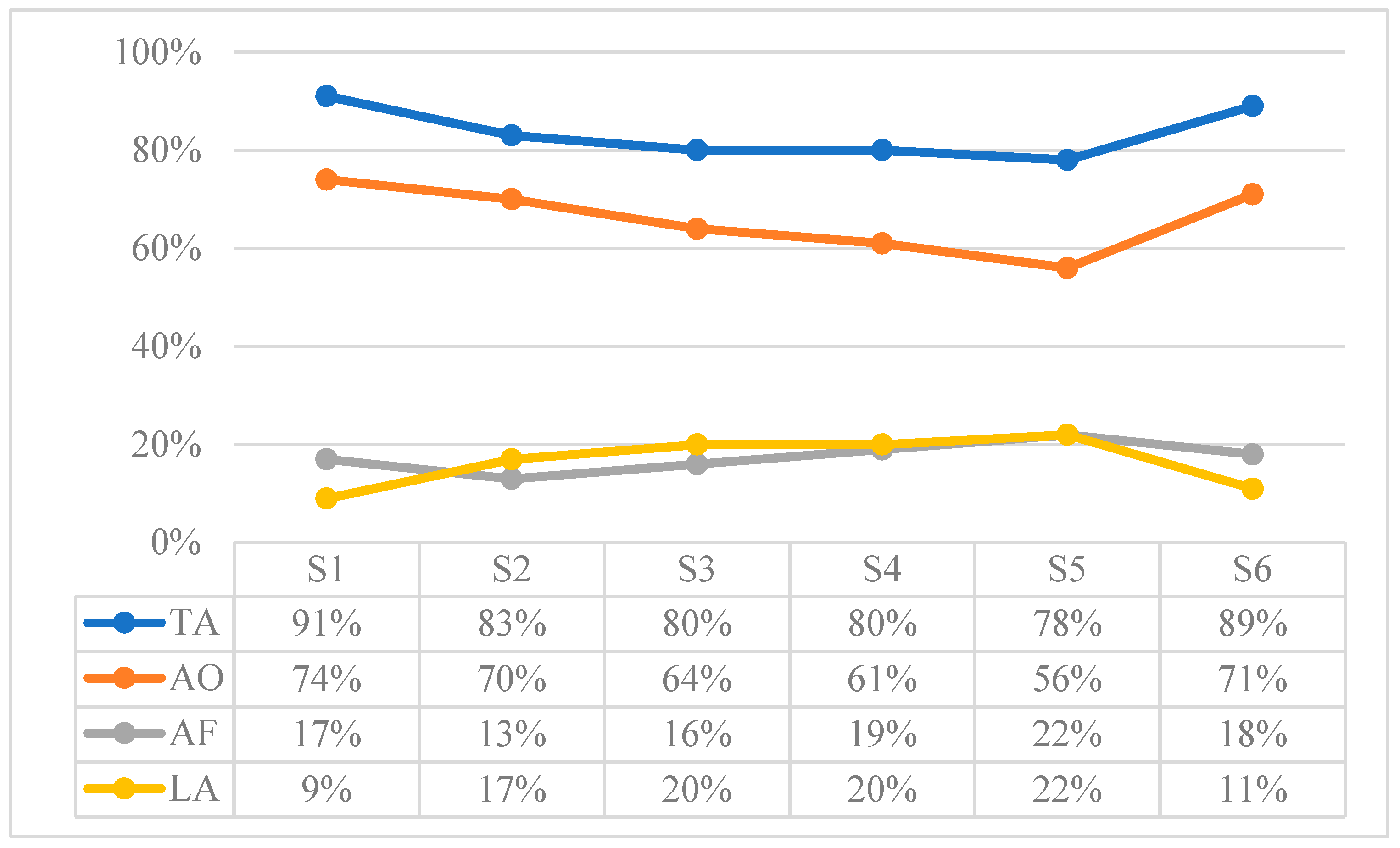

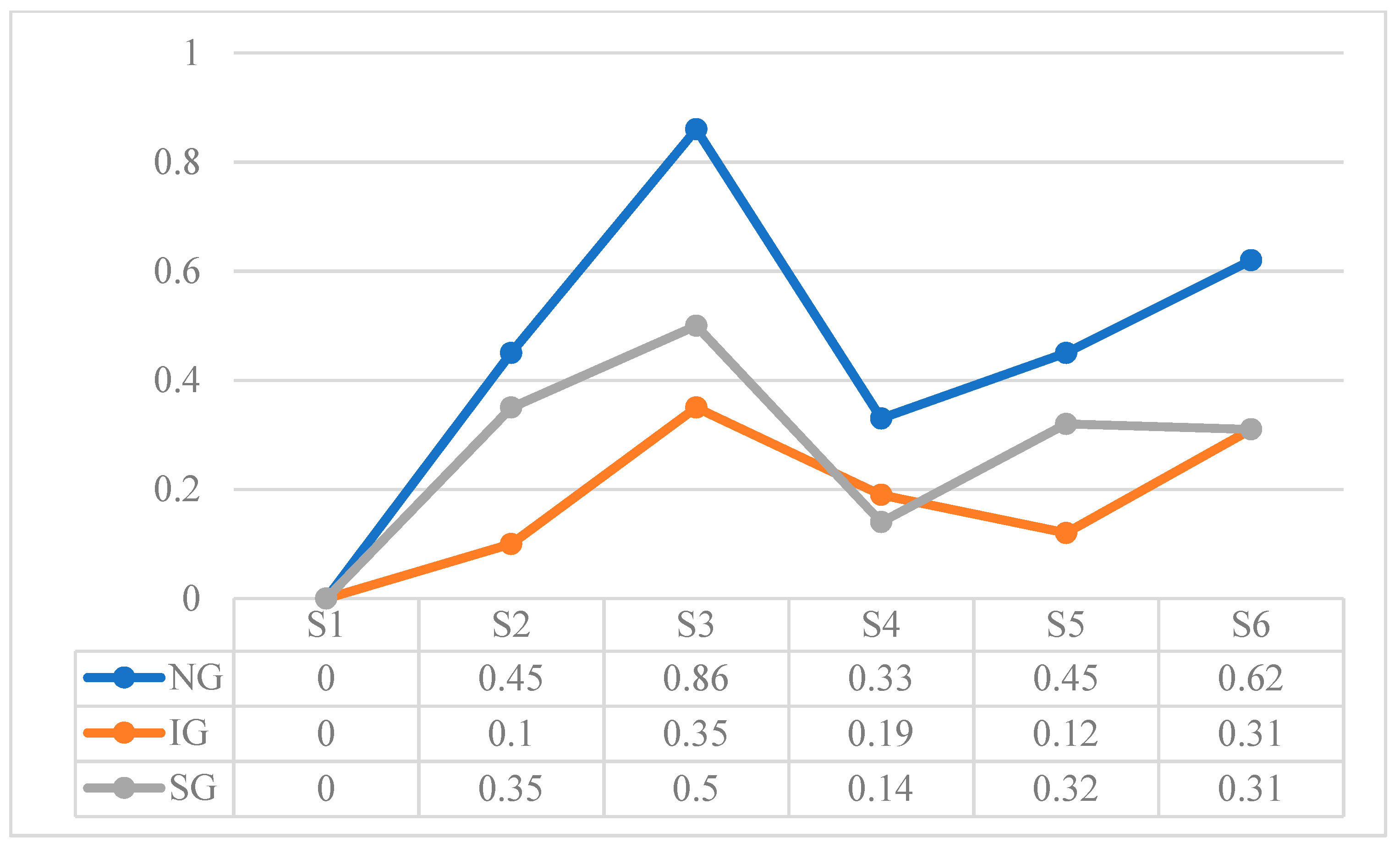
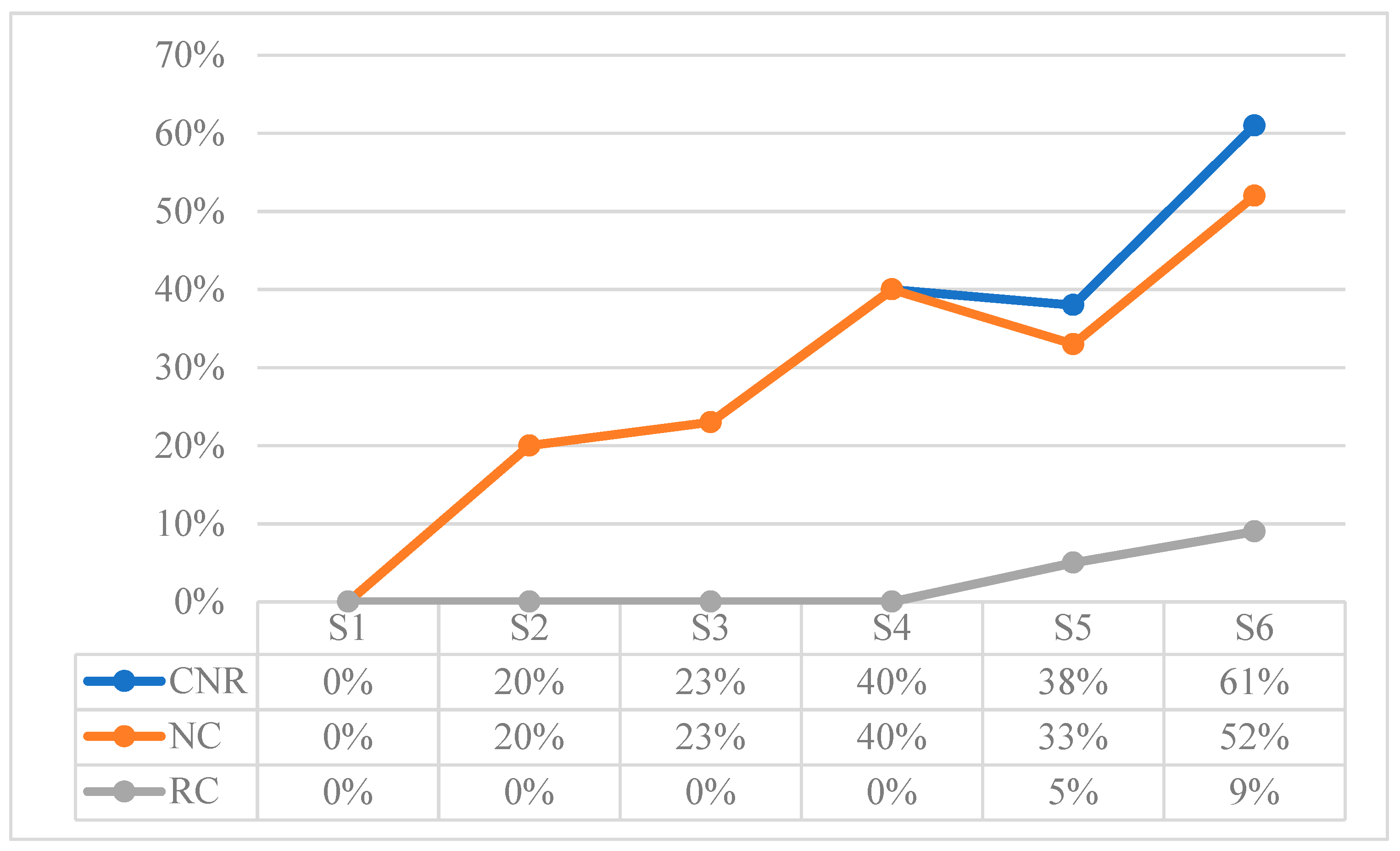


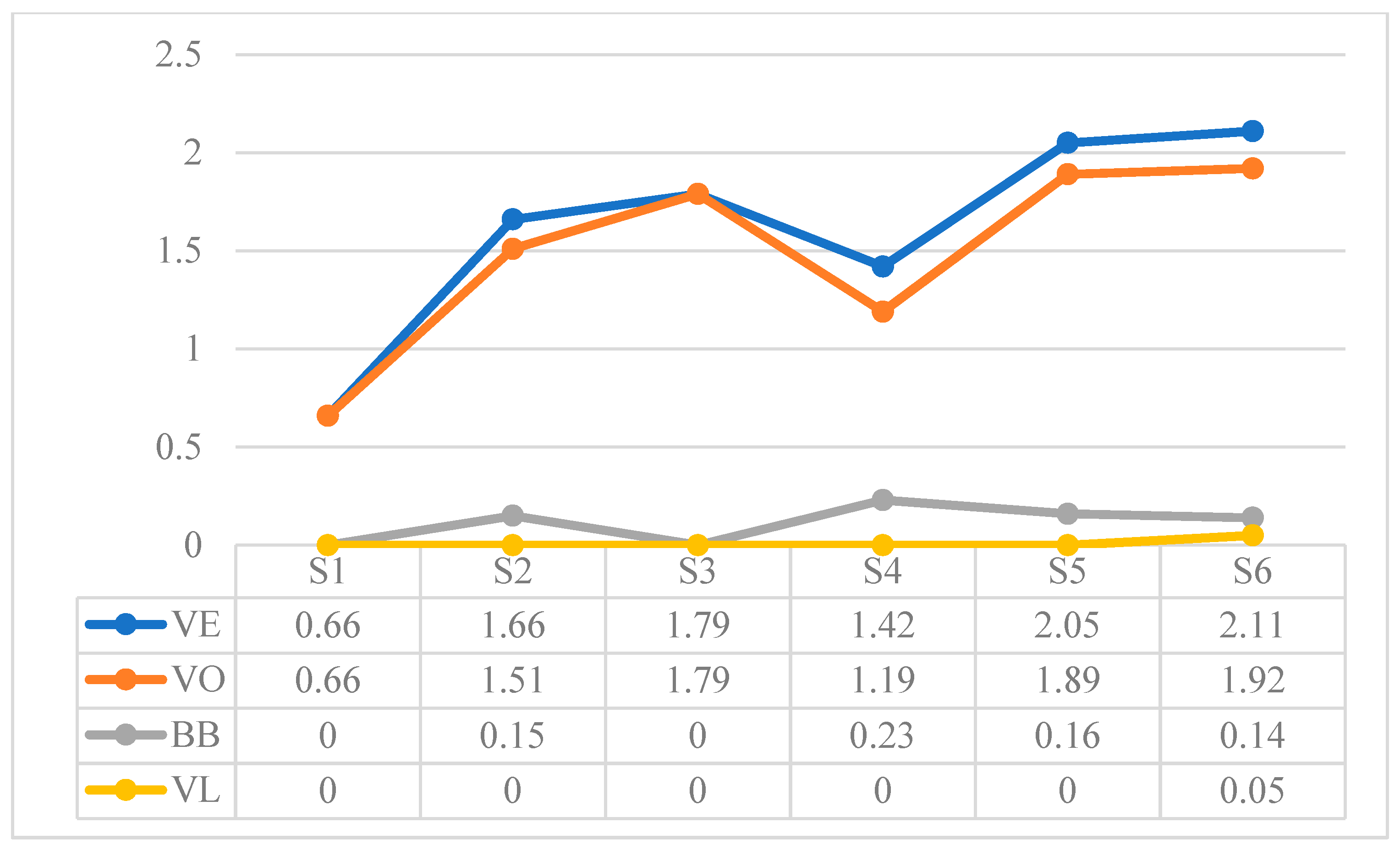
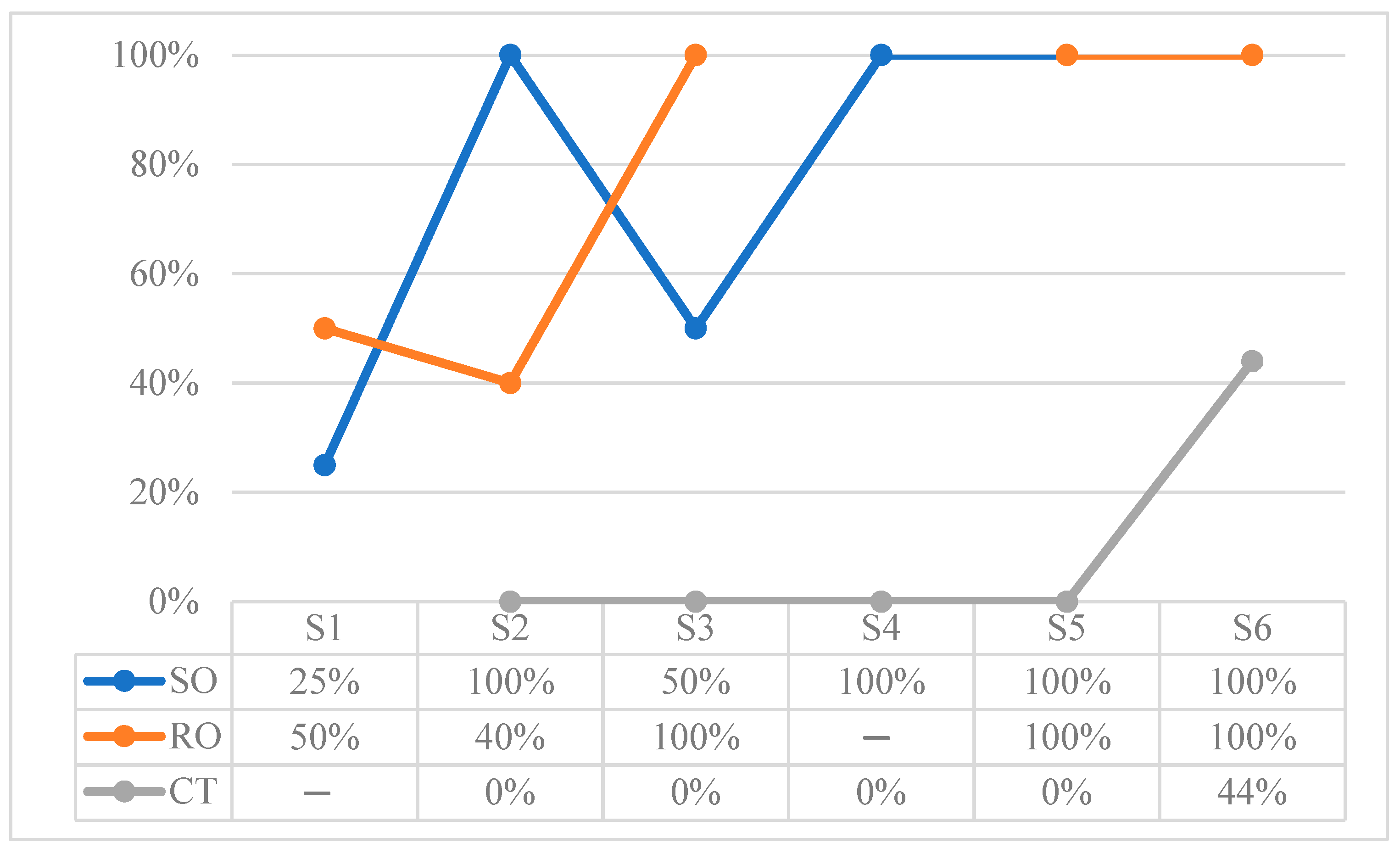
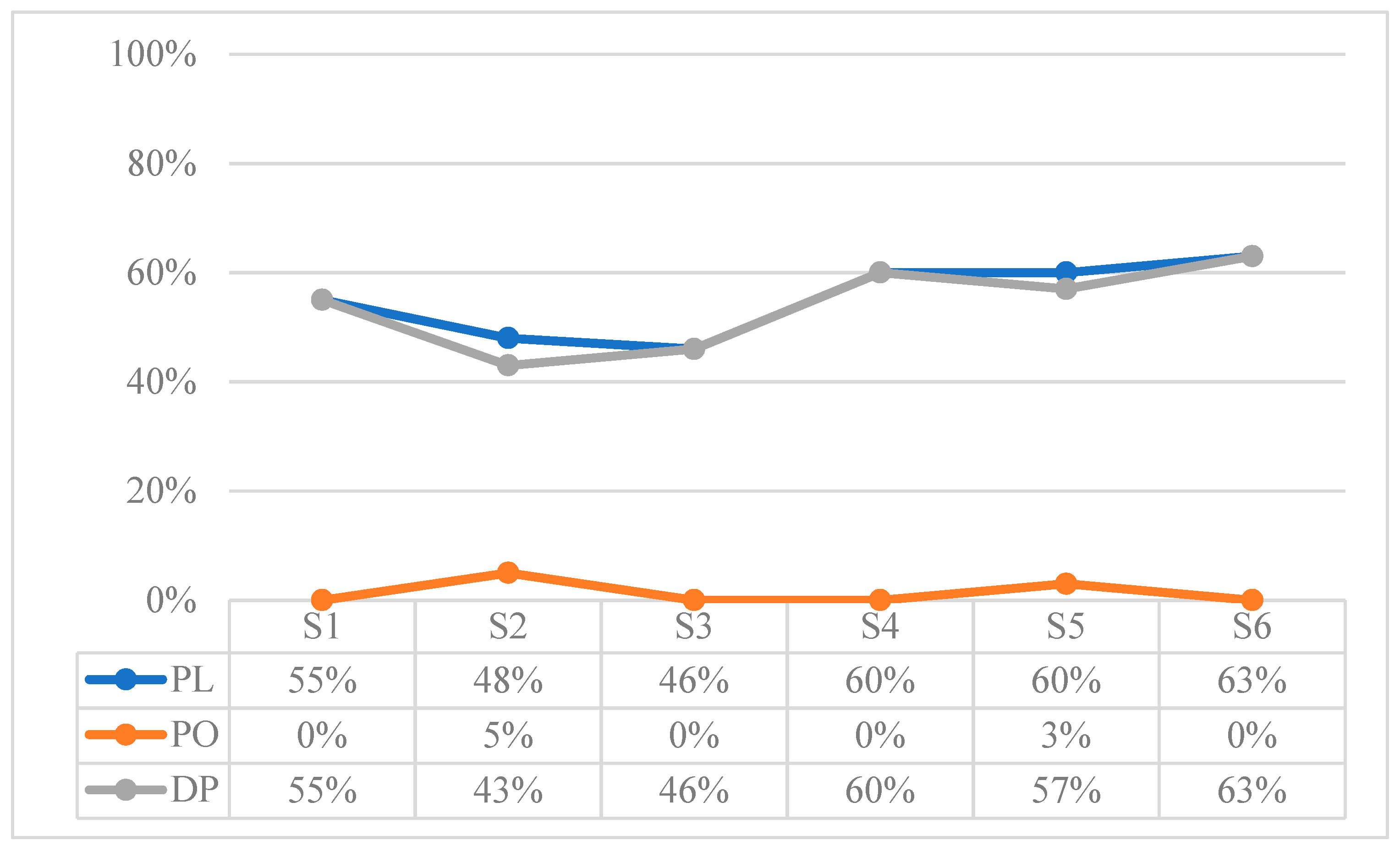
| 8 Videos (24′6″) | ||
|---|---|---|
| Video A1: 5′27″ | Child–environment interaction. Attention to different toys (train, doll, rattle). Manipulation of different toys (train, doll, rattle). | |
| Video A2: 1′54″ | Object permanence (doll behind opaque screen). Instrumental behavior (doll behind transparent screen). | |
| Video A3: 1′20″ | Object permanence (rattle under a cloth). | |
| Video A4: 40″ | Story reading format. | |
| Video A5: 5′13″ | Joint interaction with different rattles. Dyadic interaction with researcher, “conversation”. | |
| Video A6: 4′36″ | Interaction with cloth book. Manipulation of teether. Playing with toy (shiny necklace), reaching for it. | |
| Video A7: 2′43″ | Dyadic interaction with mother, “conversation”. Vocalizations are encouraged. | |
| Video A8: 2′10″ | Dyadic interaction with researcher, “conversation”. Vocalizations are encouraged. | |
| 10 Videos (19′48″) | ||
|---|---|---|
| Video B1: 47″ | Game of “cuckoo” with the mother and an opaque screen. BDI | |
| Video B2: 1′45″ | Search for the named referent. BDI | |
| Video B3: 1′1″ | Pill manipulation, putting it in and taking it out of a jar. BDI | |
| Video B4: 52″ | Manipulation of a toy screw, putting it in and taking it out of a jar. BDI Dyadic interaction with mother, imitation of vocalizations and gestures. BDI | |
| Video B5: 5′29″ | Pulling hoops in and out of a holder. BDI Exploration and movement. Passing the ball game, mother-baby. | |
| Video B6: 3′23″ | Formulation of simple instructions (“clap your hands, give kisses”). | |
| Video B7: 2′27″ | Instrumental behavior (reaching for doll and rattle behind transparent screen). BDI | |
| Video B8: 1′41″ | Object permanence (rattle and cup). BDI Understanding of “give” and “take”. | |
| Video B9: 44″ | Object permanence (toy and cloth). BDI Manipulation of electronic toy, playing at hitting a wheel | |
| Video B10: 1′39″ | Manipulation of buttons on an electronic toy farm. | |
| 9 Videos (13′54″) | ||
|---|---|---|
| Video C1: 55″ | A ball and a drum are provided, with which the researcher plays. It is observed if the child ignores the ball and pays attention to the drum. | |
| Video C2: 1′22″ | Same activity as in the previous one, with ball. Same activity with ball. | |
| Video C3: 1′38″ | Game of passing the ball in turns, child-researcher. | |
| Video C4: 1′30″ | Moving around the room to reach a toy (ball). Pulling a cloth to reach a toy. | |
| Video C5: 1′39″ | Object permanence (doll and cloth). Understanding “give” and “take”. | |
| Video C6: 47″ | Pulling cloth to reach object. Attention to toy (maraca). | |
| Video C7: 2′24″ | Tracking and searching for a hidden maraca while it sounds. | |
| Video C8: 1′6″ | Use of the index finger to handle electronic clock | |
| Video C9: 2′34″ | Spoon manipulation. Manipulation of comb. Interaction with electronic clock. | |
| 11 Videos (21′) | ||
|---|---|---|
| Video D1: 1′26″ | Removing and inserting hoops from a support. | |
| Video D2: 51″ | Building of a tower with three interlocking blocks. | |
| Video D3: 1′20″ | Building a tower with three interlocking blocks. Unlocking the blocks of the tower. | |
| Video D4: 17″ | Unlocking the blocks of the tower. | |
| Video D5: 1′24″ | Construction of the tower with the mother. | |
| Video D6: 35″ | Story reading format. | |
| Video D7: 53″ | Story reading format. | |
| Video D8: 5′44′ | Cups activity: two plastic cups are arranged and a toy is hidden in one of them. Using a deictic gesture and a look, the child is told where the toy is, so that he/she uncovers the cup. | |
| Video D9: 1′ | Cup activity. Understanding “take” and “give”. | |
| Video D10: 3′36″ | Screen activity: the baby must follow the path of the electronic toy that moves. On the way there is a cardboard screen. It is seen if the child anticipates the place of appearance. | |
| Video D11: 3′54″ | Button manipulation on an electronic toy. | |
| 12 Videos (24′18″) | ||
|---|---|---|
| Video E1: 1′57″ | Understanding of the deictic gesture when pointing to “mama”. Mother–child interaction, with juice. Moving around the room. | |
| Video E2: 5′23″ | Game child–mother–tambourine. Game tambourine–investigator. Understanding “give me”, “take”. Search for hidden tambourine while it sounds. Game of “cuckoo” spontaneous on the part of the child, hides behind tambourine. | |
| Video E3: 40″ | Understanding: “stick out your tongue”, “where is your nose”, “clap your hands”. | |
| Video E4: 1′36″ | Pulling rope to reach tambourine. Triadic interaction, child–investigator–tambourine. | |
| Video E5: 1′8″ | Construction of a tower with cubes with the mother. Construction of tower with the researcher. | |
| Video E6: 4′35″ | Opening a can containing pieces with the mother. Spontaneous play by the baby with the researcher, play drinking from the can. Put pieces through the can slot with the researcher. Spontaneous solitary play with electronic toy table. | |
| Video E7: 2′18″ | Cups activity (understanding referential clues). | |
| Video E8: 2′7″ | Same activity of the cups with small ball. | |
| Video E9: 1′29″ | Activity of guessing the trajectory of the electronic toy. | |
| Video E10: 19″ | Same activity of guessing the trajectory of the toy. | |
| Video E11: 42″ | Same activity of guessing the trajectory of the toy. Spontaneous play with mother, hiding behind the screen. | |
| Video E12: 2′14″ | Attention and movement to reach the microphone that plays sounds. Manipulation of the microphone. Understanding “give” and “take”. | |
| 12 Videos (35′22″) | ||
|---|---|---|
| Video F1: 5′41″ | Child–investigator game—board game. | |
| Video F2: 3′31″ | Game with board with geometric figures. | |
| Video F3: 2′43″ | Game with tambourine, practice of “give” and “take”. | |
| Video F4: 1′46″ | Game with tambourine, understanding simple orders, “give it to mom”. | |
| Video F5: 2′48″ | Story reading format. | |
| Video F6: 2′13″ | Story reading format. | |
| Video F7: 2′11″ | Building and disassembling a tower with three blocks. | |
| Video F8: 2′25″ | Taking out and putting rings on a support. | |
| Video F9: 1′41″ | Game with an electronic turtle that moves and plays music. | |
| Video F10: 2′16″ | Guessing the path of an electronic toy Comprehension: “where are the ears?”, “stick out your tongue”, cow, sheep. | |
| Video F11: 6′43″ | Cup activity: two and three cups with rattle. | |
| Video F12: 1′25″ | Cups activity: three cups and toy screw. | |
| 1 Video (47′) | ||
|---|---|---|
| Video SAT: 47′ | Reaching for the tambourine by pulling on a string. Pulling hoops in and out of a support. Playing with a small keyboard with sound. Playing with a house, hitting a button. Game with colored cubes containing rattles. Object permanence (rattle and containers). To open a box and to obtain the rattle inside. Stand up with technical support. To open a plastic jar to take out figures. Playing with geometric figures board. To imitate the sound of the Indian Playing with tambourine and sticks, imitating drum. Playing with a baby doll. Playing with bubbles. | |
| Domains and Subdomains | Time 1 (12 Months) | Time 2 (18 Months) |
|---|---|---|
| Adaptive | 7 | 12 |
| Personal/Social | 6 | 9 |
| Communicative | 6 | 11 |
| Receptive Expressive | 8 4–5 | 15–16 9–11 |
| Motor | 6 | 10 |
| Gross Fine | 7 5 | 9 12 |
| Cognitive | 10 | 17 |
| Global Score | 7 | 12 |
| Time 1 | Time 2 | |||
|---|---|---|---|---|
| PC | CI | PC | CI | |
| Adaptive | 6 | 77 − | 9 | 80 + |
| Attention | 10 | 81 | 9 | 80 + |
| Feeding | 6 | 77 − | 20 | 87 + |
| Dressing | - | - | 4 | 74 |
| Personal Responsibility | - | - | - | - |
| Toileting | - | - | - | - |
| Time 1 | Time 2 | |||
|---|---|---|---|---|
| PC | IQ | PC | IQ | |
| Personal/Social | 8 | 79 | 5 | 75 |
| Adult Interaction | 10 | 81 | 37 | 95 ++ |
| Expression feelings/affect | 39 | 96 + | 15 | 84 + |
| Self-Concept | 1 | 65 −− | 1 | 65 −− |
| Peer Interaction | - | - | 1 | 65 −− |
| Social Role | - | - | - | - |
| Time 1 | Time 2 | |||
|---|---|---|---|---|
| PC | CI | PC | CI | |
| Communicative | 17 | 86 | 8 | 79 |
| Receptive | 35 | 94 + | 23 | 89 + |
| Expressive | 1 | 65 −− | 2 | 69 |
| Time 1 | Time 2 | |||
|---|---|---|---|---|
| PC | CI | PC | CI | |
| Motor | 20 | 87 | 1 | 65 − |
| Muscle Control | 4 | 74 − | - | - |
| Body Coordination | 38 | 95 + | 1 | 65 − |
| Walking | 13 | 83 | 1 | 65 − |
| Gross Motor Score | 22 | 88 | 1 | 65 − |
| Fine Motor Skills | 21 | 88 | 11 | 82 + |
| Perceptual Motor Skills | - | - | 24 | 89 ++ |
| Fine Motor Score | 26 | 90 | 24 | 89 ++ |
| Time 1 | Time 2 | |||
|---|---|---|---|---|
| PC | CI | PC | CI | |
| Cognitive | 52 | 101 ++ | 71 | 108 ++ |
| Perception | 2 | 69 −− | 60 | 104 ++ |
| Memory | 53 | 101 ++ | 10 | 81 |
| Reasoning/Academic Skills | 20 | 87 | 23 | 89 + |
| Development of concepts | - | - | 27 | 91 + |
| TA | AO | AF | LA | |
|---|---|---|---|---|
| S1 | 929/1014 | 755/1014 | 174/1014 | 85/1014 |
| S2 | 575/694 | 487/694 | 88/694 | 119/694 |
| S3 | 606/756 | 488/756 | 118/756 | 150/756 |
| S4 | 982/1226 | 743/1226 | 239/1226 | 244/1226 |
| S5 | 931/1193 | 663/1193 | 268/1193 | 262/1193 |
| S6 | 1792/1998 | 1426/1998 | 366/1998 | 206/1998 |
| TS/O | GF | DP | CNR | RR | NG | VE | |
|---|---|---|---|---|---|---|---|
| S1 | T/O: 9/10 S/O: 0 | 0/1 | 0/1 | 0/5 | 1/6 | -- | 0.66/m |
| S2 | T/O: 16/16 S/O: 0 | 0/1 | 0/1 | 2/10 | 9/20 | 0.45/m | 1.66/m |
| S3 | T/O: 14/14 S/O: 0 | 1/3 | 0/2 | 3/13 | 13/24 | 0.86/m | 1.79/m |
| SAT | T/O: 19/21 S/O: 0 | 0 | -- | 8/32 | 12/21 | 0.27/m | 1.44/m |
| S4 | T/O: 15/15 S/O: 0 | 7/13 | 2/5 | 6/15 | 9/23 | 0.33/m | 1.42/m |
| S5 | T/O: 9/9 S/O: 0 | 5/6 | 5/8 | 8/21 | 28/41 | 0.45/m | 2.05/m |
| S6 | T/O: 15/15 S/O: 0 | 9/10 | 7/7 | 14/23 | 43/56 | 0.62/m | 2.11/m |
| SO | RO | CT | PL | |
|---|---|---|---|---|
| S1 | 1/4 | 1/2 | -- | 791/1446 O: 791/791 D: 0 |
| S2 | 4/4 | 2/5 | Rings: 0/3 Tower: -- | 571/1188 O: 511/571 D: 60/571 |
| S3 | 1/2 | 4/4 | Rings: 0/3 | 385/834 O: 385/385 D: 0 |
| S4 | 1/1 | -- | Rings: 0/3 Tower: 0/3 | 750/1260 O: 750/750 D: 0 |
| S5 | 7/7 | 2/2 | Rings: -- Tower: 0/3 | 892/1458 O: 835/892 D: 57/892 |
| S6 | 15/15 | 2/2 | Rings: 3/4 Tower: 0/3 Figures: 1/2 | 1400/2212 O: 1400/2212 D: 0 |
Disclaimer/Publisher’s Note: The statements, opinions and data contained in all publications are solely those of the individual author(s) and contributor(s) and not of MDPI and/or the editor(s). MDPI and/or the editor(s) disclaim responsibility for any injury to people or property resulting from any ideas, methods, instructions or products referred to in the content. |
© 2023 by the authors. Licensee MDPI, Basel, Switzerland. This article is an open access article distributed under the terms and conditions of the Creative Commons Attribution (CC BY) license (https://creativecommons.org/licenses/by/4.0/).
Share and Cite
Diez-Itza, E.; Llona, F.; Martínez, V. Early Communicative Development in Williams Syndrome: A Longitudinal Case Study. Children 2023, 10, 1900. https://doi.org/10.3390/children10121900
Diez-Itza E, Llona F, Martínez V. Early Communicative Development in Williams Syndrome: A Longitudinal Case Study. Children. 2023; 10(12):1900. https://doi.org/10.3390/children10121900
Chicago/Turabian StyleDiez-Itza, Eliseo, Florencia Llona, and Verónica Martínez. 2023. "Early Communicative Development in Williams Syndrome: A Longitudinal Case Study" Children 10, no. 12: 1900. https://doi.org/10.3390/children10121900
APA StyleDiez-Itza, E., Llona, F., & Martínez, V. (2023). Early Communicative Development in Williams Syndrome: A Longitudinal Case Study. Children, 10(12), 1900. https://doi.org/10.3390/children10121900





